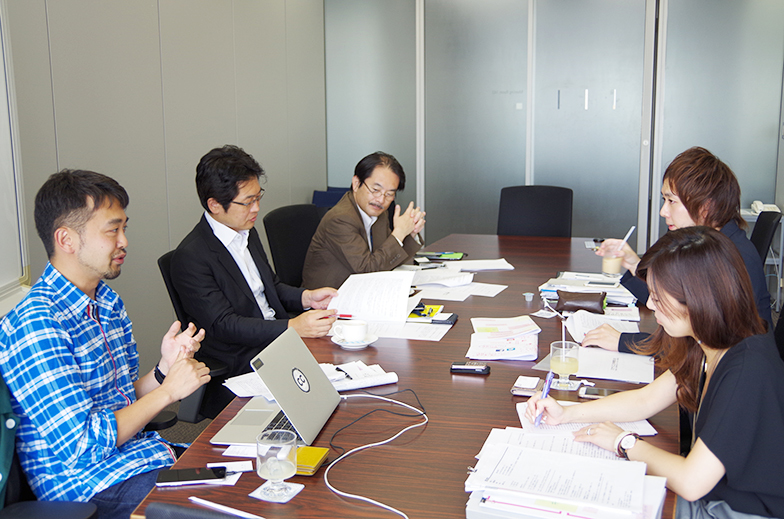The Growing Focus on Attention Acquisition in the Visual Communication Era
Amano: In user interviews, people mentioned that the appeal of YouTube stars and Viners lies in their amateur status combined with high update frequency, making their content fresh and engaging. In contrast, professionals appearing on TV often seem to be doing the same thing over and over.
This focus seems less about the content itself and more about the speed and variety of delivery options, highlighting how rapidly user attention shifts today. It's symbolic of changing consumption patterns.
Dominique: The point about content production speed is certainly interesting. Personally, appearing on NHK's "NEWS WEB," I feel television's content production pace might not match internet users' expectations.
This program tries to maintain a live feel by gathering viewer opinions via Twitter, but for better or worse, the editing team's subjectivity – or rather, the sense that it's overly crafted – becomes glaringly obvious, leading to weaker online reactions. On the flip side, when accidents or unexpected emotional outbursts occur, the internet responds instantly.
Of course, TV content itself is used as material for communication. But if positive, interesting transformations are occurring on top of that, it means the communication built upon professionally produced, high-quality information has become the goal itself. And it's precisely the high-frequency content that best aligns with this form that deeply locks users into their information activities, right?
Shitara: Regarding content generation speed, is there concern that visual communication via smartphones might erode the functions of official media like TV and magazines?
Dominique: I think it will effectively bifurcate. It's difficult for TV or magazines to imitate the internet. NHK Specials or Brutus's permanent preservation editions offer a panoramic view and overview you can't get online, with a sense of deep exploration. But if visual communication becomes mainstream online, I wonder if people aren't searching for information that deeply in the first place.
Miwa: Visual communication can be consumed all at once, unlike text, so comparing things becomes constant. Attention shifts instantly based on what's most interesting or boring. In this environment, it's said that what gets noticed is "something with style."
For example, having consistent photo editing frames, a unified tone and style across photos, a defined composition, or just the right amount of embellishment with stickers... This seems to be the background behind why people buy stickers or pay to enhance their own photos and increase their attention.
What We Can See from How Picsee is Used
Kitahara: Dominique, you released and operate the private photo messenger app Picsee, right? It's positioned as an app for visual communication, less about exchanging or sharing photos, and more about experiencing the exchange and sharing of perspectives – in the sense of "showing others what you're seeing right now." It was also recently selected for Apple's "App Store Best of 2015" in the Apps category.
Based on the findings from this survey, were there any particular points that stood out to you?
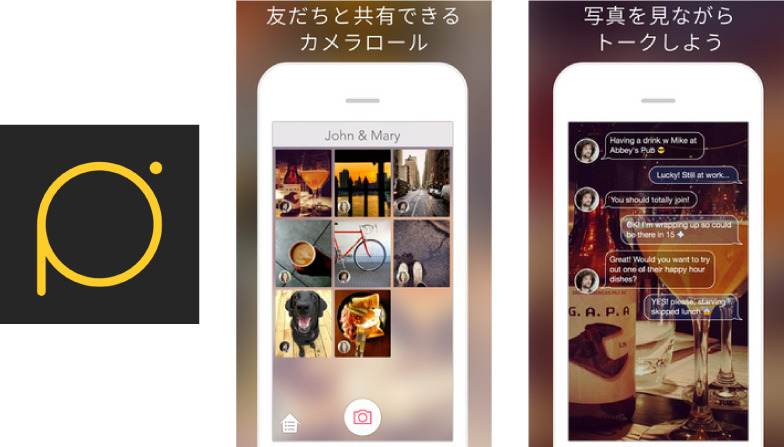
Picsee logo and app description
Dominique: On Picsee, "things you wouldn't normally talk about" become communicable and possible.
A middle schooler I know who uses Picsee uploads one photo a week to a group of close friends, getting 500-600 comments. They just keep interacting solely on that photo. When they seem to run out of things to say, someone will casually upload the next photo, and the conversation continues there.
This was a completely unexpected use at first, but it frequently happens that literal communication (text-based communication) chains together while looking at photos. It's like casually setting up a space for literal communication, similar to uploading a wallpaper.
During Picsee's development, we debated removing comments entirely to focus purely on visual communication. But we realized midway that starting with visuals and then flowing into text-based communication is a natural progression.
With LINE or text messengers, the pattern is often to use them when you have something specific to say. I think this is largely because their architecture is designed around a timeline optimized for typing text first.
With Picsee, we discovered that there exists a form of literal communication that is inherently visual.
Amano: This time, we're consciously contrasting literal communication with visual communication, but in reality, they're complementary, right?
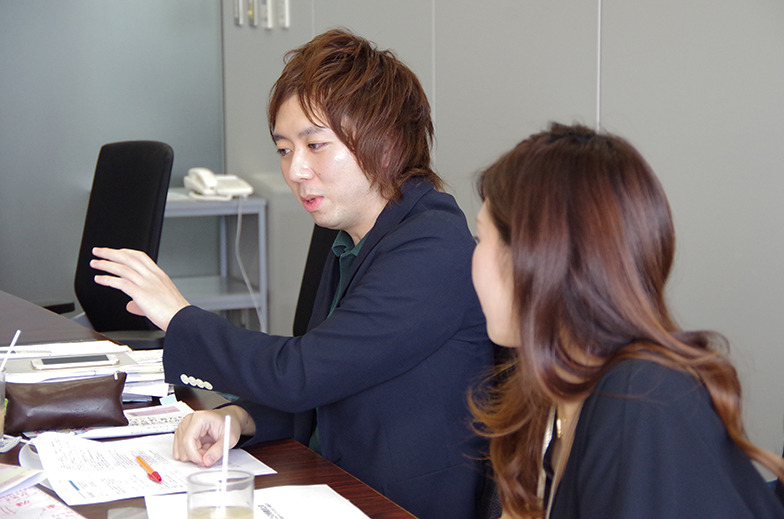
Dominique: Yes, that feels like the most natural form. Even on LINE, stickers reduce the pressure of verbal communication. On the other hand, pure visual communication with zero contextual information is pretty extreme.
So personally, I find visual communication like Picsee—where a certain context is tacitly understood—just plain "easy." Since it arrives with just a press of the shutter button, there's this sense that communication is triggered by that button. In literal communication terms, it's like writing text and sending it simultaneously by pressing the shutter.
The more you use it, the less you consciously think about it—you stop overthinking every composition. For example, I'm in a private group where friends send each other photos of "noodles" or "curry." Thanks to this, I stay loosely connected with people I don't usually contact, which makes me think this is one of the benefits of visual communication.
Kitahara: The lack of burden is also a factor, right?
Dominique: It's just effortless. In app and service design, there's a term called "number of steps." A common saying is that halving the number of steps can revolutionize that field.
Take e-commerce, for example. Before, you had to enter your credit card info every time you bought something. If you could achieve a secure environment where you could buy with just one click, that would halve the number of steps, and everyone would buy more.
Snapchat reduces psychological burden by making photos disappear, and with Picsee, the ability to send photos immediately after taking them eliminates unnecessary steps between close friends, enabling new forms of communication that weren't possible before.
Thinking along these lines, text-based services like Twitter still rely on classical keyboard input for typing. If alternative input methods could reduce the cost (number of steps) of literal communication, it might foster a different communication culture.
For example, walking around Tokyo, you see Chinese tourists talking away into WeChat while walking, sending voice messages. That also seems like an example of effectively skipping text input. Of course, the cultural aspect of not feeling embarrassed to speak loudly in public also plays a role (laugh).
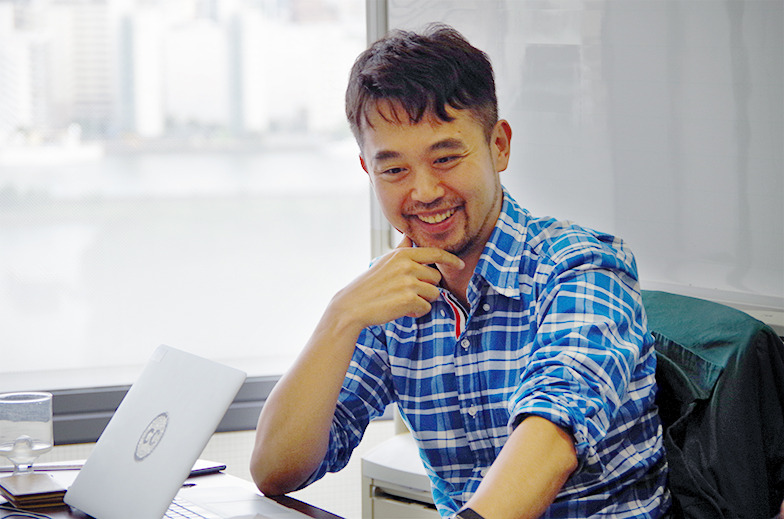
Visual Communication Suggests a New Form of "Picture-Text Alignment" Communication
Amano: Today's smartphone users increasingly communicate by sending images, conveying their current situation, the atmosphere of the moment, or their feelings through visuals rather than words.
It's fascinating to hear that while people edit photos for Instagram to show others, they often send unedited images to close friends via messenger to share their feelings.
This reminds me of a point made by the artist Boissier in Media Representation (edited by Ishida and Yoshimi, 2015, University of Tokyo Press). He noted that "mobile phones are shifters." He described how mobile phones/smartphones function as devices that shift the speaker's "here, now, and self."
He states that just as one might hand someone a letter written with a fountain pen, modern users are handing over visuals like images and videos to others. As we've discussed, isn't the boundary between literal communication and visual communication steadily closing?
Shitara: The way we share information and keep daily logs has also become very simple. It's shifting from diary-style to album-style, where we record with photos rather than writing text.
One characteristic of today's youth is their extreme awareness of how others perceive them, leading them to withhold their true feelings. Rather than describing their inner thoughts—like what they felt that day—they increasingly express their identity by visually documenting their actions.
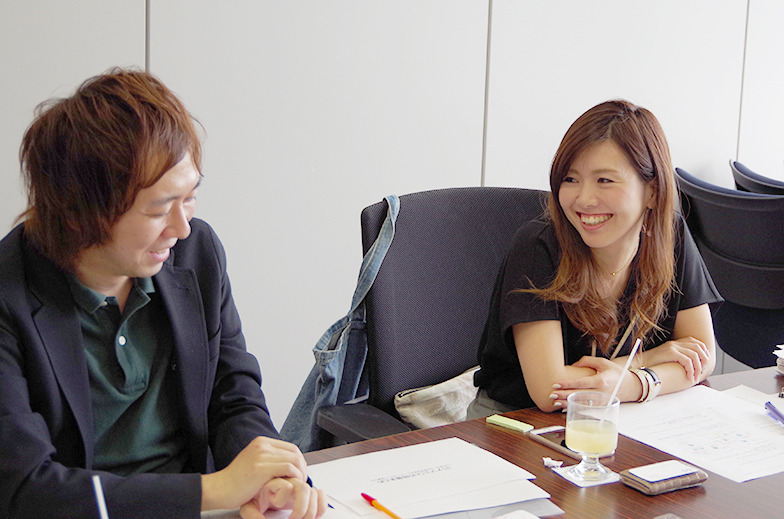
Amano: Drawing on our research findings, we've explored several cross-cutting topics. The convergence of information technology enabling effortless sending and receiving of photos and videos, coupled with shifts in user psychology, is driving a clear shift from literal communication to visual communication, particularly among younger smartphone users.
Furthermore, for smartphone users, the distinction between literal and visual communication is becoming blurred. We see instances where visual communication is used to invigorate literal communication, or where visuals are employed literally to explain intangible elements like the atmosphere of a place. The effect of the "shifter" mentioned earlier may be becoming normalized among younger users, suggesting that literal and visual communication are increasingly becoming equivalent.
During the Meiji era, the movement for "language-writing consistency" (genbun ichiji) aligned spoken and written language, forming a new cultural movement. Following this precedent, what is happening now could be called "image-writing consistency" (eibun ichiji) – a new form of communication integration where images and text align.
[Video] Visual Communication: 7 Key Points







